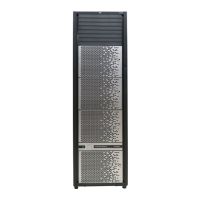Table 7 Data replication features and functions
DescriptionFeature
Performs remote copy operations between disk arrays at different locations.
Continuous Access Synchronous provides the synchronous copy mode for open
Continuous Access Synchronous
and
systems. Continuous Access Synchronous Z provides synchronous copy for mainframe
systems.
Continuous Access Synchronous
Z
Creates internal copies of volumes for purposes such as application testing and
offline backup. Can be used in conjunction with True Copy or Continuous Access
Journal to maintain multiple copies of data at primary and secondary sites.
Business Copy and
Business Copy Z
Snapshot creates a virtual, point- in- time copy of a data volume. Since only changed
data blocks are stored in the Snapshot storage pool, storage capacity is substantially
Snapshot (open systems only)
less than the source volume. This results in significant savings compared with full
cloning methods. With Snapshot, you create virtual copies of a data volume in the
Virtual Storage Platform
This feature provides a RAID storage based hardware solution for disaster recovery
which enables fast and accurate system recovery, particularly for large amounts of
Continuous Access Journal and
Continuous Access Journal Z
data which span multiple volumes. Using Continuous Access Journal, you can
configure and manage highly reliable data replication systems using journal volumes
to reduce chances of suspension of copy operations.
This feature provides compatibility with IBM Extended Remote Copy (XRC)
asynchronous remote copy operations for data backup and recovery in the event
of a disaster.
Compatible FlashCopy
Table 8 Security features and functions
DescriptionFeature
This feature implements encryption for both open systems and mainframe data
using the encrypting disk adapter. It includes enhanced key support up to 32
DKA Encryption
separate encryption keys allows encryption to be used as access control for multi
tenant environments. It also provides enhanced data security for the AES-XTS mode
of operations.
Storage management users of HP XP7 systems can be authenticated and authorized
for storage management operations using existing customer infrastructure such as
Microsoft Active Directory, LDAP, and RADIUS based systems.
External Authentication and
Authorization
Provides greater granularity and access control for HP XP7 storage administration.
This new RBAC model separates storage, security, and maintenance functions
Role Based Access Control (RBAC)
within the array. Storage Management users can receive their “role” assignments
based on their group memberships in external authorization sources such as
Microsoft Active Directory and LDAP. This RBAC model will also align with the
RBAC implementation in HCS 7.
Successor to the XP24000/XP20000 Disk Array Storage Logical Partition (SLPR).
It allows for additional granularity and flexibility of the management of storage
resources.
Resource Groups
Table 9 System maintenance features and functions
DescriptionFeature
The Audit Log function monitors all operations performed using Remote Web
Console (and the SVP), generates a syslog, and outputs the syslog to the Remote
Web Console computer.
Audit Log Function
Provides support for SNMP monitoring and management. Includes HP specific MIBs
and enables SNMP based reporting on status and alerts. SNMP agent on the SVP
SNMP Agent
gathers usage and error information and transfers the information to the SNMP
manager on the host.
Software features and functions 15

